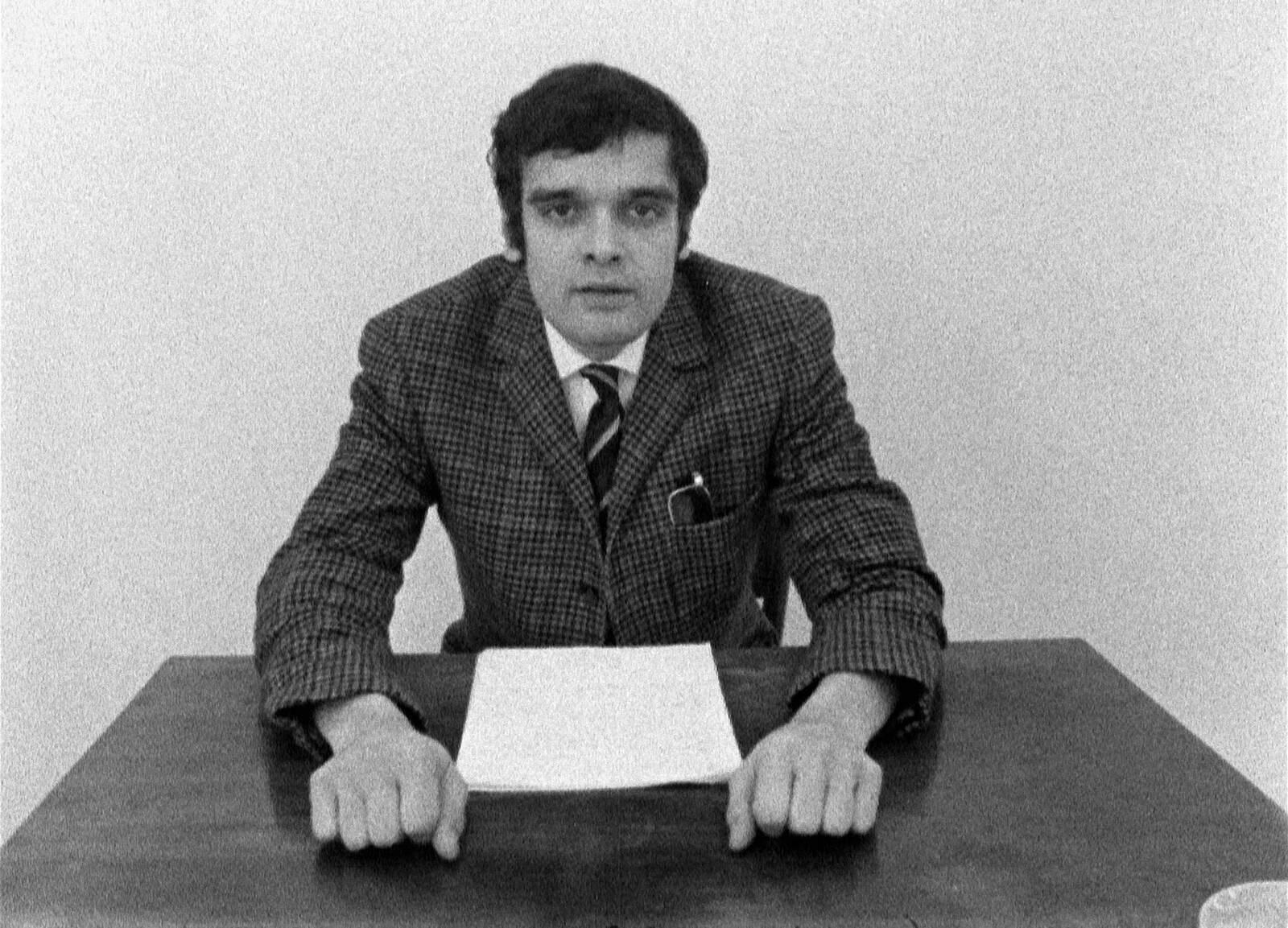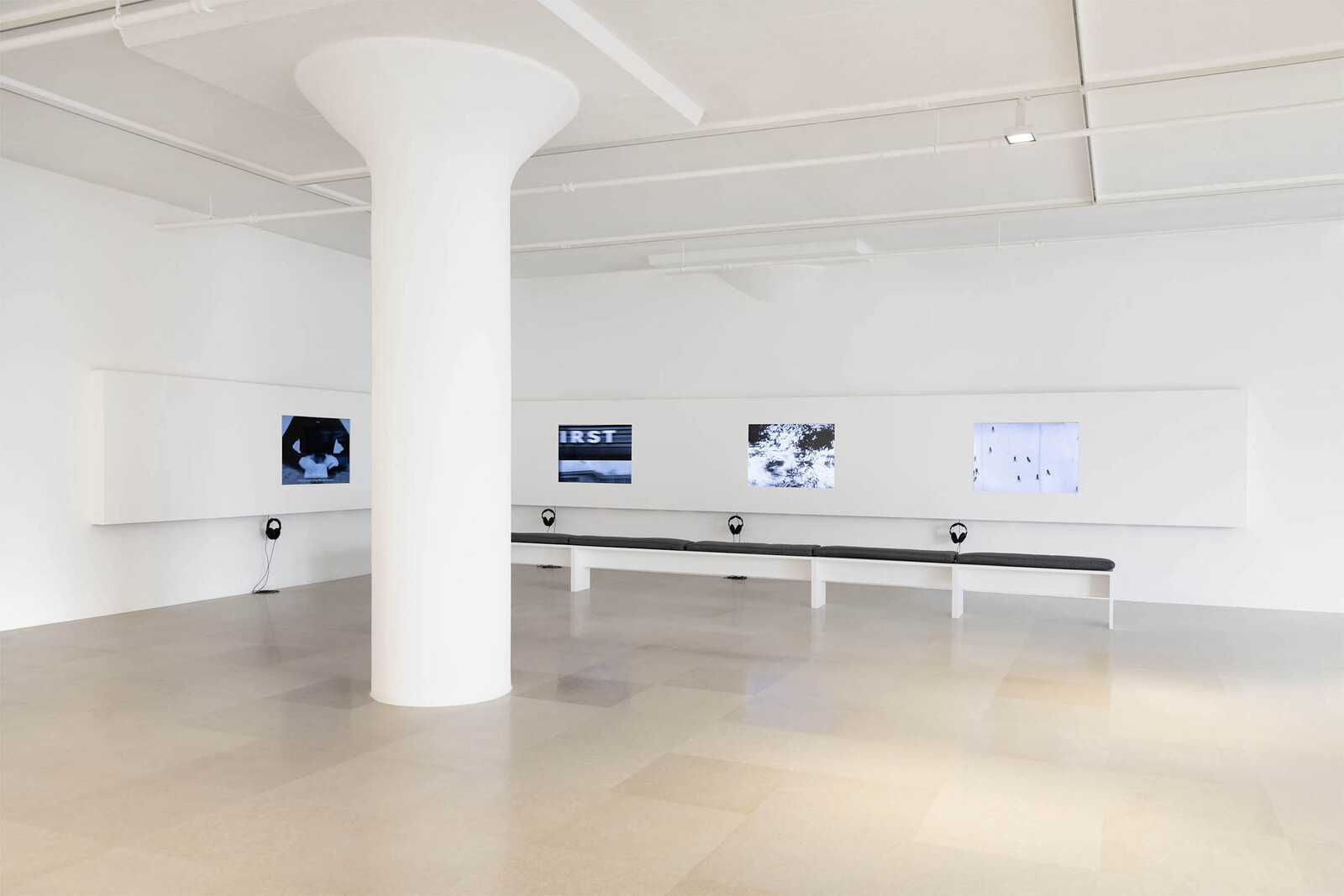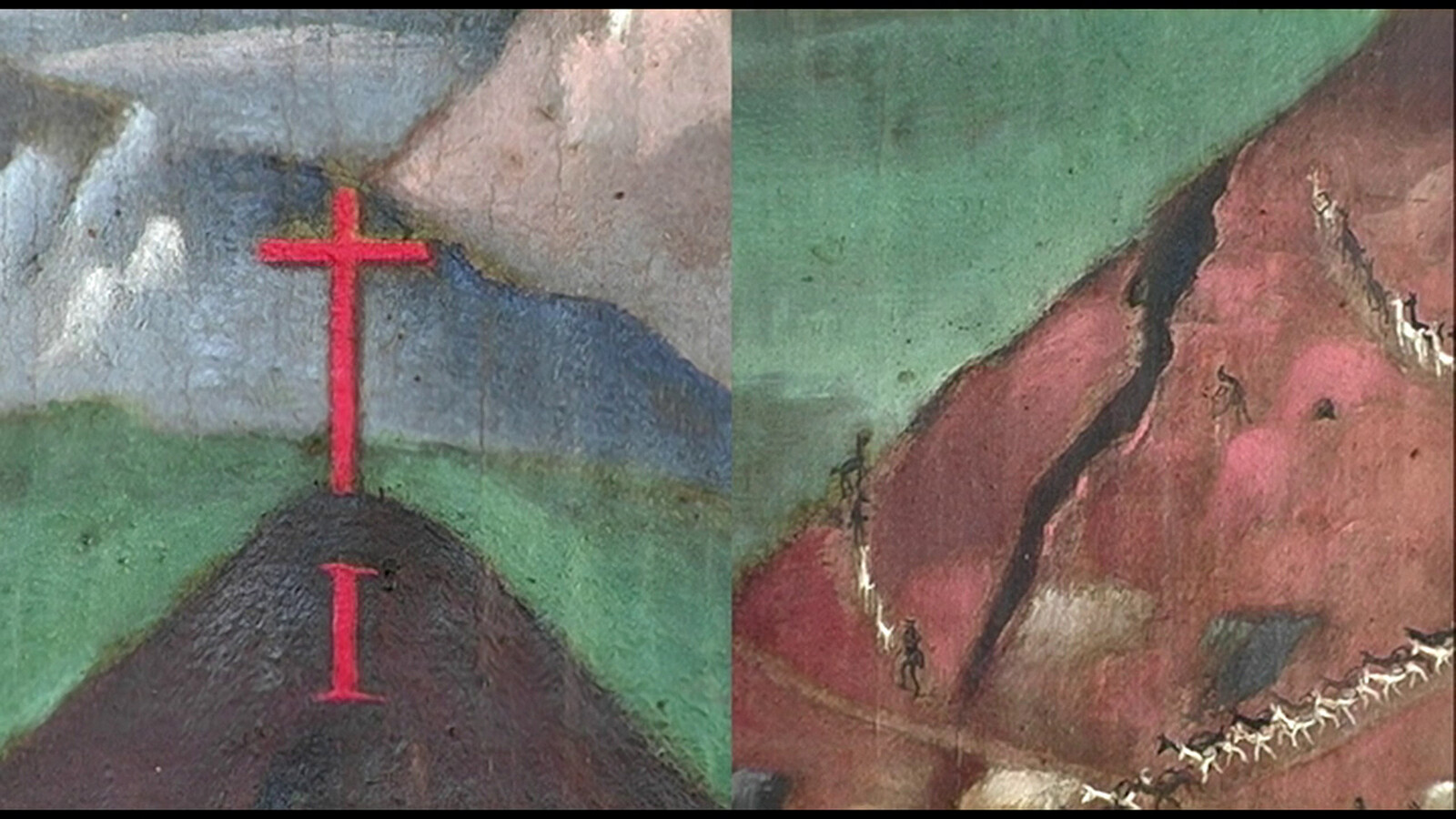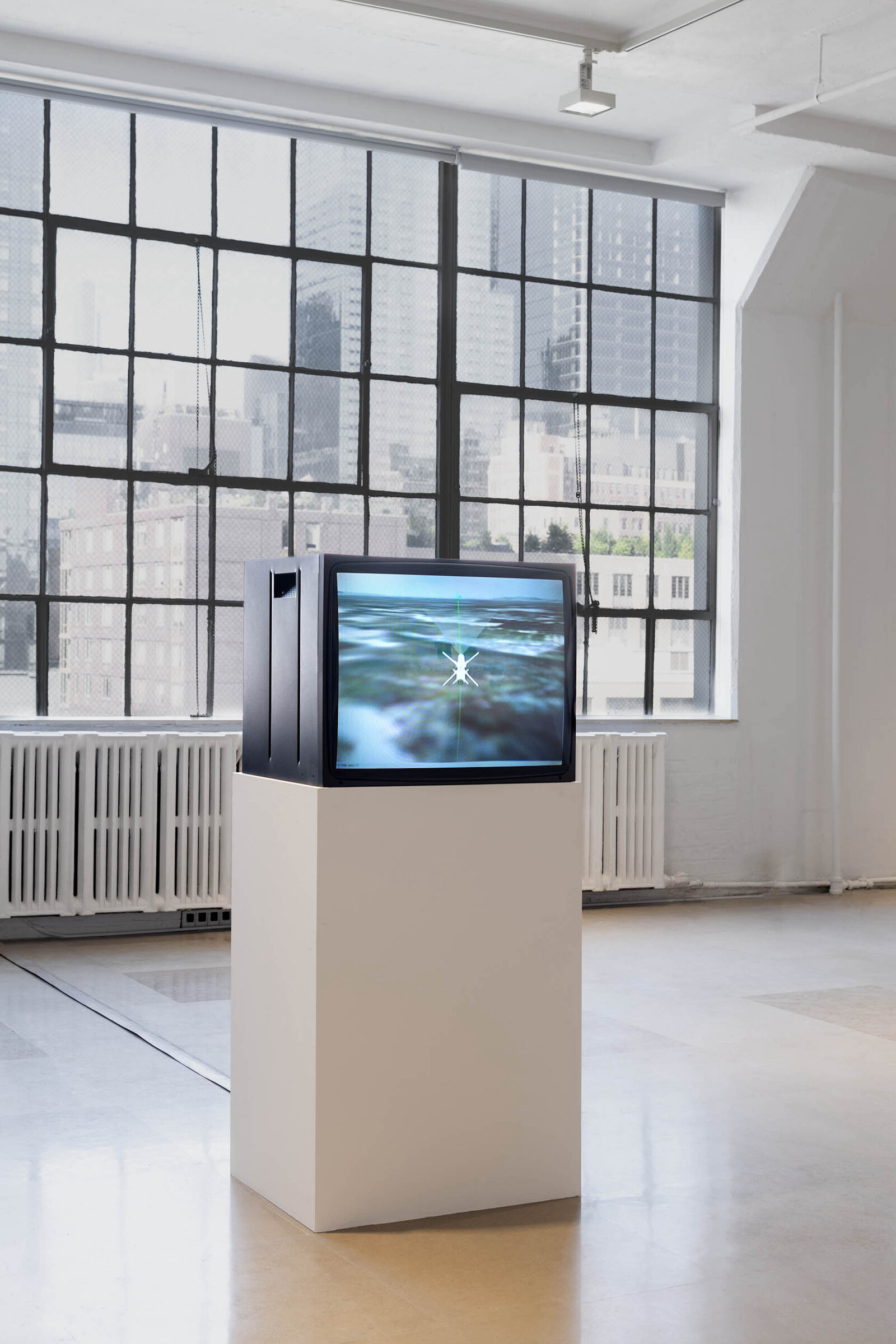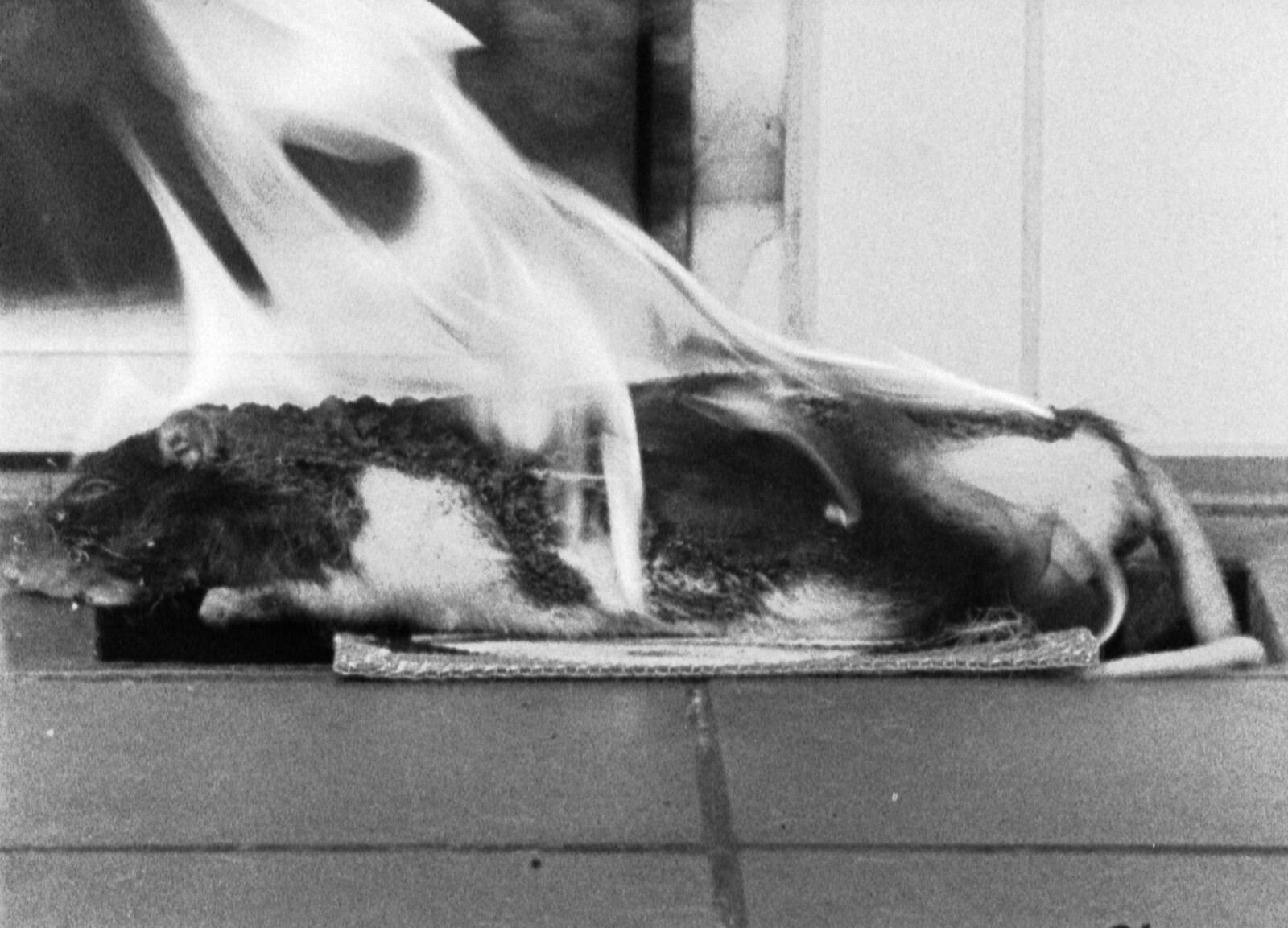Greene Naftali’s new exhibition of works by Harun Farocki derives its title from perhaps the German filmmaker’s most famous work, a gently excoriating and laser-sharp 1969 film about the complicity shared amongst politicians, Dow Chemical executives, and ordinary workers in the production of the chemical weapon napalm. Inextinguishable Fire remains utterly devastating, a frightening but cogent delineation of the phases of dissociation we experience as we gaze at media images of atrocity, and a methodical examination of how the abstraction of labor makes us unconscious of our complicity in the violence of war.
Here, however, the specificity of Farocki’s title is, along with its definite article, lost. This lends it a more nebulous quality. Perhaps the “inextinguishable fire” in question refers not to a chemical weapon, the slightest drop of which—the film’s voiceover narration tells us—burns for half an hour at a temperature of 3,000 degrees Celsius. In the context of a show that marks a decade since the filmmaker’s death, the title almost sounds like a tone-deaf tribute to Farocki’s burning legacy. It loses its precision as a catch-all for a group of works that branches two different phases of the filmmaker’s career (the 1960s and the 2000s) and address wildly divergent topics: Maoist theory, political journalism, Vietnam, weapons technology, colonialism, the Holocaust, computer graphics, and Christian symbolism.
The current exhibition is the third iteration of a 2022 show curated by the late filmmaker’s partner and collaborator Antje Ehmann. The previous two versions, installed at Forum Stadtpark in Graz, Austria, and Galerie Barbara Weiss in Berlin, had a different title, itself somewhat vague: “Against War.” In 2024, however, after ten months of Israel’s genocidal assault on Gaza, the word “war” takes on a new specificity, and a stance against war is, for some, suddenly controversial.
There are, however, more changes to the exhibition beyond its title. One moving-image work has been removed—2007’s Transmission, a video about the quasi-religious experience tourists seek in visiting monuments and memorials such as the Vietnam Memorial in Washington and Buchenwald concentration camp—and has been replaced with another from the same year: Respite, a chilling silent video which examines seemingly innocuous images from an unfinished 1944 promotional film created for a Nazi transit camp in the Netherlands, whose function was to efficiently funnel Jewish and Roma captives to Auschwitz and Bergen-Belsen.
A potentially damning alteration occurs elsewhere, in the very first item in the show, a 2023 “work” entitled The Activist’s Wardrobe. In its Berlin iteration, this collection of the filmmaker’s politically themed T-shirts includes one that sports a green Nike logo along with the text: “Palestine—Just Do It.” A group of autonomous activists protesting the show have claimed that, in changing the show’s title and eliminating this item, the organizers are guilty of erasure and even censorship of Farocki’s own support for the liberation of Palestine from Israeli occupation.
Whether or not this is the case, “Inextinguishable Fire” is symptomatic of at least two enduring trends in the commercial art world: the annexation of leftist political art with little attention to its actual content and commitments, and the haphazard embrace of moving-image art with little attention to its installation in the gallery space. It seems reasonable to assume that both of these would have been noxious to Farocki, who over fifty years of work honed a diverse mode of filmmaking marked by a careful investigation of images, their content and provenance, a logic of comparison and juxtaposition, and a slightly austere, but always lucid mode of address. This body of work has spurred entire fields of moving-image art. Even before his death it could be said that virtually everyone working in noncommercial documentary media—video essayists, archival artists, agit-prop activists, research-based practitioners—owes a great deal to his more than one hundred films, videos, and installation works.
He was also, despite his enormous influence, a generous and approachable commentator on his own work and the work of others. (It is less clear to me how he would have reacted to the weirdly sacralizing exhibition of a collection of his T-shirts, recorded in Greene Naftali’s checklist as just another Farocki work, dated nine years after his passing.) When Rachael Rakes and I emailed Farocki while reviewing his 2011 exhibition at MoMA, he graciously responded. One answer in particular stays with me. To a query about whether the exhibition format is less didactic than the traditional cinematic setting, Farocki replied: “Less didactic—should one fear being didactic? One should avoid being like a bad teacher / lecturer.”
Farocki’s lifelong project was one of pedagogical clarity by way of a methodology of comparison in which the viewer is able to understand the relation between images and between those images and the actual world. Each of the works in this show, if one takes the time to actually watch them, invites us to understand this relation: between West Berlin and Vietnam (Their Newspapers, 1968); between the project of colonial extraction and its self-representation (The Silver and the Cross, 2010); and, most importantly, between production and destruction (A Way, 2005). Jill Godmilow’s 1998 shot-for-shot remake of Inextinguishable Fire was titled What Farocki Taught, and carefully attending to his teachings, even his didacticism, seems particularly urgent in a moment in which mediated genocide unfolds before our eyes. To understand how we become inured to atrocity, how we become blind to the ways in which we are complicit in violence, and how violence and destruction are intertwined with our own labor and production—yes, even that of artists, filmmakers, academics, and art galleries.
